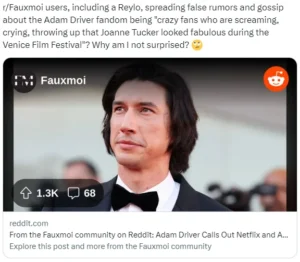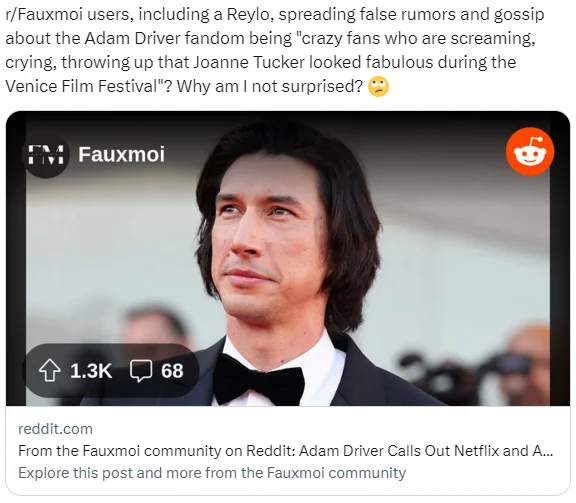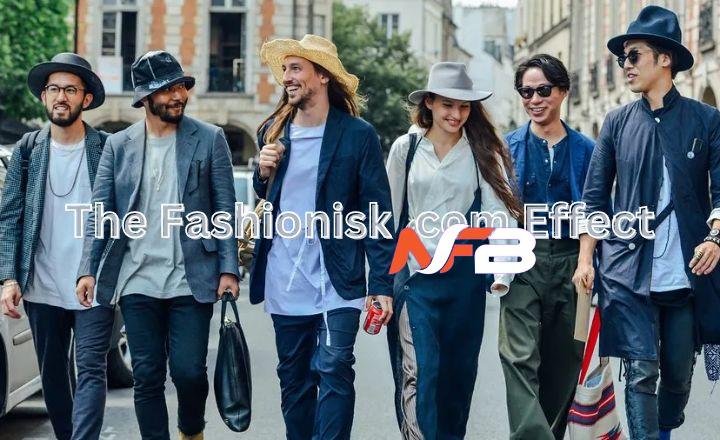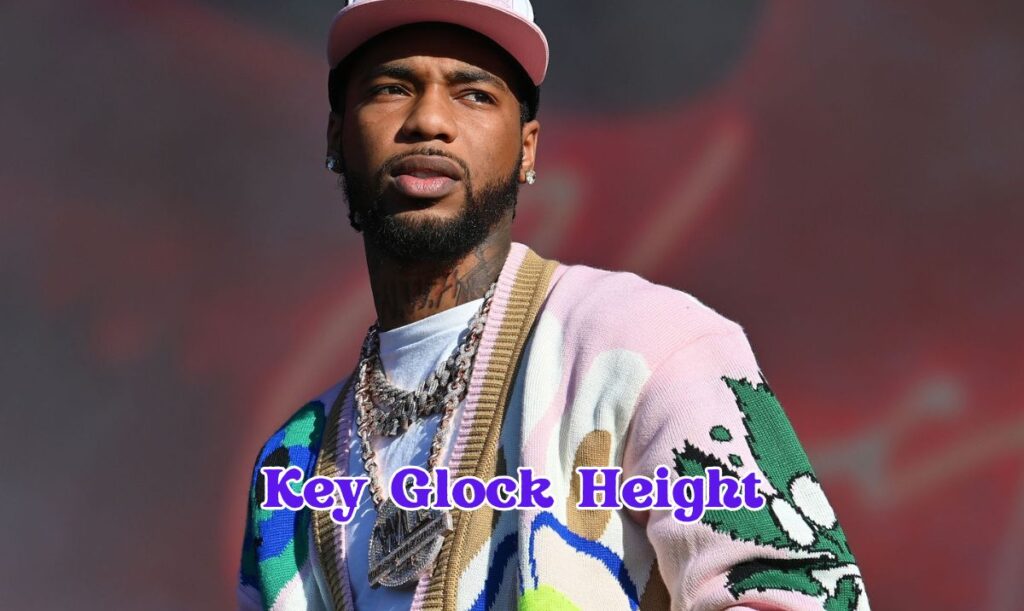What is Fauxmoi?
Fauxmoi represents a burgeoning trend within the digital fashion landscape that seamlessly intertwines technology and style. Originating from the intersection of virtual environments and fashion blogging, fauxmoi emerged as a way to express individuality and personal style in online platforms. This trend has gained traction primarily due to the rising popularity of social media and virtual reality environments, which allow users to curate and showcase their unique aesthetic without the limitations of physical clothing.
The term “fauxmoi” blends the concepts of “faux,” indicating imitation or artificiality, and “moi,” meaning “me” in French, thus encapsulating the essence of presenting one’s online self through a curated, often altered, lens of fashion. In this digital era, traditional notions of fashion are evolving; individuals now seek to project their identities through avatars and curated images rather than solely relying on real-life attire. As such, fauxmoi exists at the crossroads of self-expression, artistry, and technological advancement.
Fauxmoi also highlights the growing significance of online fashion representation and expression, particularly in a world increasingly influenced by visual culture. As consumers engage with fashion in diverse virtual spaces, they embrace the freedom to experiment and explore styles that may not be accessible in their everyday lives. Digital fashion items, avatars, and virtual fashion shows epitomize the innovative ways that fauxmoi can be leveraged to enhance one’s digital presence.
Ultimately, fauxmoi symbolizes a progressive shift in how we perceive and engage with fashion in the digital age, inviting a more democratic approach to style that transcends geographical and financial constraints. The importance of understanding fauxmoi lies not just in its aesthetic appeal but also in its potential to redefine the future of fashion and personal identity.
The Impact of Fauxmoi on Fashion Industry
The emergence of fauxmoi has significantly impacted various aspects of the fashion industry, influencing designers, brands, and consumer behavior in profound ways. As digital fashion continues to gain traction, traditional fashion houses have begun to adapt their strategies to cater to a new wave of consumers who value innovation and sustainability. This shift has led designers to rethink their creative processes, integrating digital representations that blend seamlessly with reality, thus creating a hybrid fashion experience.
Fashion brands, both established and emerging, have recognized the potential of fauxmoi as a marketing tool, leveraging its appeal to reach tech-savvy consumers. For instance, campaigns that incorporate augmented reality and virtual try-ons showcase how brands can engage customers in a more interactive and personalized manner. By embracing this digital dimension, companies can respond to the climate crisis and consumer demand for responsible practices through the development of digital-only lines that minimize waste associated with traditional fashion production.
Furthermore, fauxmoi has reshaped consumer behavior by encouraging a more conscious approach to fashion consumption. With the increasing prevalence of digital clothing, consumers are becoming more mindful of their purchasing decisions. They are seeking products that not only fulfill their aesthetic desires but also resonate with their values of sustainability and responsibility. This shift in perspective is prompting brands to strengthen their commitment to ethical practices and innovative production methods, establishing a new standard in the industry.
The implications of fauxmoi extend beyond aesthetics; they are also changing how fashion is produced and consumed. The collaborative nature of digital platforms fosters a sense of community among consumers, allowing them to participate in the fashion narrative. As the industry continues to adapt to the fauxmoi trend, the potential for growth and transformation remains vast, ushering in an era where digital innovation meets sustainable practices.

Fauxmoi in Everyday Life
The integration of Fauxmoi into daily life is becoming increasingly notable, as individuals discover innovative ways to express their personal style and identity through digital fashion. Social media platforms, notably Instagram, TikTok, and Pinterest, serve as thriving ecosystems for Fauxmoi enthusiasts, allowing users to curate and share their virtual wardrobes with a global audience. Through hashtags and dedicated communities, individuals can connect with others who share their passion for this unique blend of personal expression and digital artistry.
Many users have reported that Fauxmoi has transformed their approach to fashion. One testimonial highlights a young professional who used to feel restricted by traditional fashion norms. “Discovering Fauxmoi allowed me to experiment with styles that I would never have dared to try in real life,” she reflects. By utilizing augmented reality filters and digital fitting rooms, she is now able to explore an infinite variety of clothing options, mixing and matching outfits without the constraints of physical limitations.
Online communities centered around Fauxmoi further enhance this experience, providing a space for individuals to exchange tips, inspiration, and encouragement. Platforms such as Reddit and dedicated Facebook groups foster discussions on the latest trends, allowing users to showcase their outfits and receive feedback from peers. This sense of belonging and shared passion not only enriches personal style but also contributes positively to one’s self-esteem.
The appeal of Fauxmoi extends beyond the individual; it also resonates in collaborative fashion projects and digital fashion shows. By showcasing their creations, designers and artists can engage with audiences in real-time, allowing for a democratic fashion platform that honors creativity and innovation. In sum, Fauxmoi is not just a trend; it symbolizes a shift in how we perceive fashion, placing emphasis on creativity, community, and self-expression in everyday life.
The Future of Fauxmoi
The landscape of digital fashion and specifically fauxmoi is poised for significant transformation in the coming years. As technology advances, we can anticipate a new era where artificial intelligence and augmented reality completely revolutionize the way we engage with digital clothing and accessories. Innovations such as 3D printing may allow for the rapid creation of custom garments, blurring the lines between virtual designs and tangible fashion. This could enable consumers to experience fauxmoi not just as a digital phenomenon but also as a part of their physical lives.
Furthermore, the integration of blockchain technology presents opportunities for enhanced transparency in the digital fashion market. As concerns grow about sustainability and ethical manufacturing practices, fauxmoi could offer insights into the lifecycle of digital products, ensuring authenticity and trustworthiness. This transparency may lead to more conscientious consumer behavior, encouraging individuals to make informed choices about their fashion consumption.
An essential aspect of the future of fauxmoi lies in its increasing accessibility. With the proliferation of mobile devices and the expansion of the metaverse, the potential user base for digital fashion will only grow. This democratization could lead to diverse voices in the design sphere, fostering creativity and innovation. As a result, consumers may find themselves engaged with brands and designers that resonate more closely with their personal identities.
Moreover, as society continues to embrace digitalization, the cultural implications of fauxmoi will become increasingly prominent. The boundaries between digital and traditional fashion could dissolve, compelling designers to rethink their strategies and adapt to a new marketplace. As we look ahead, it is clear that the future of fauxmoi will challenge conventional fashion norms, leading us to reassess our relationship with clothing in an increasingly digital world.




Leave a Reply